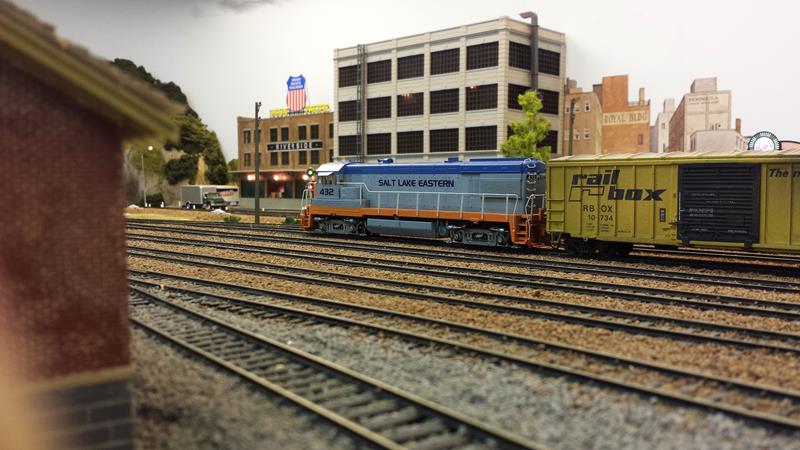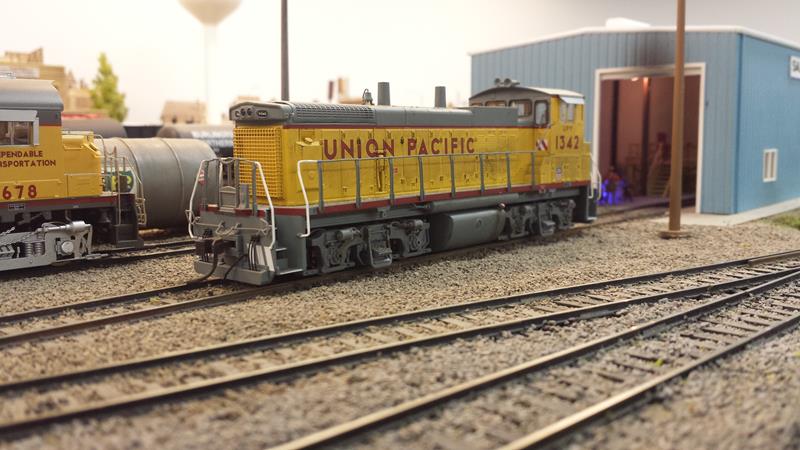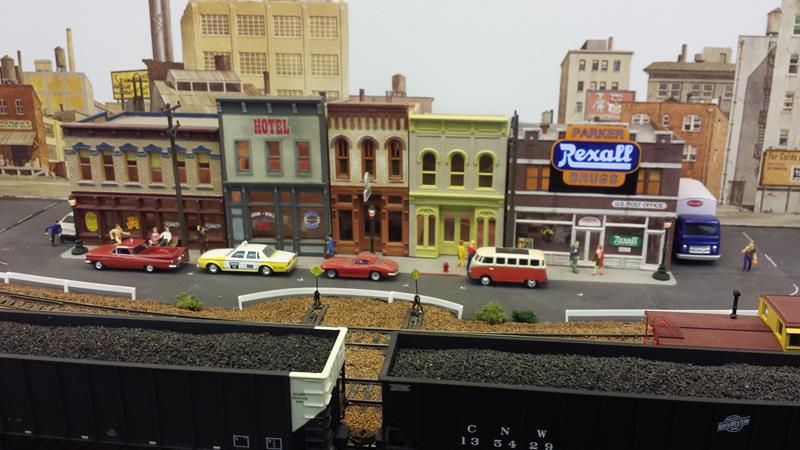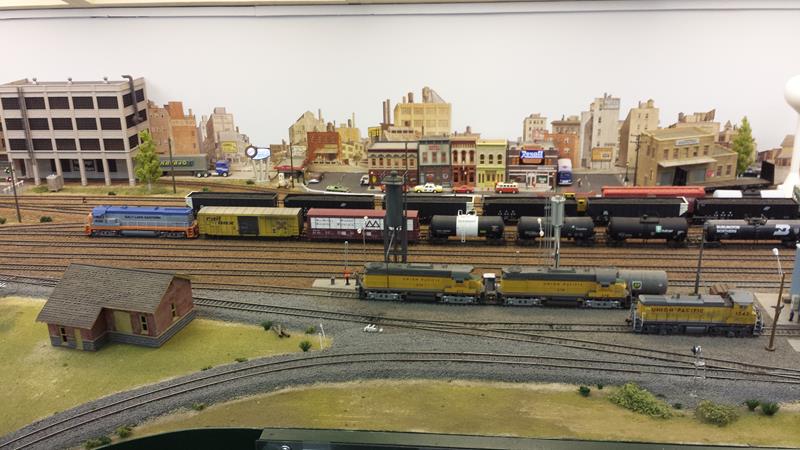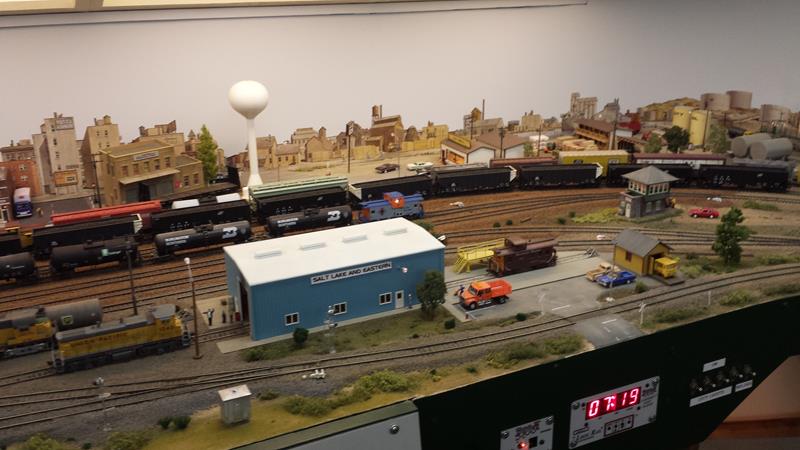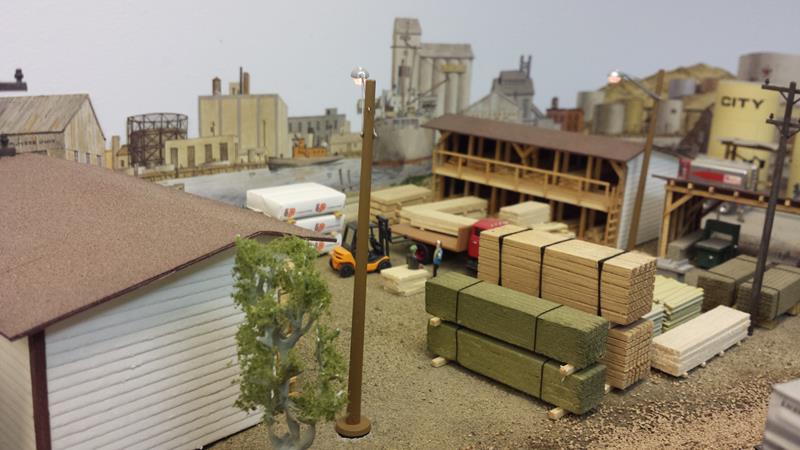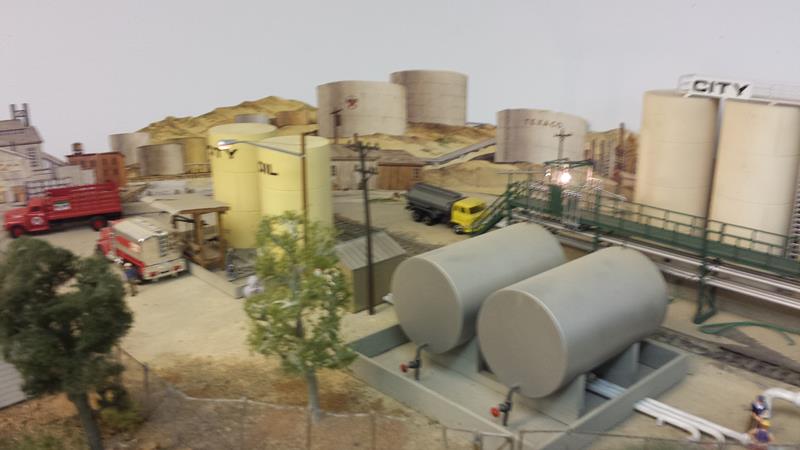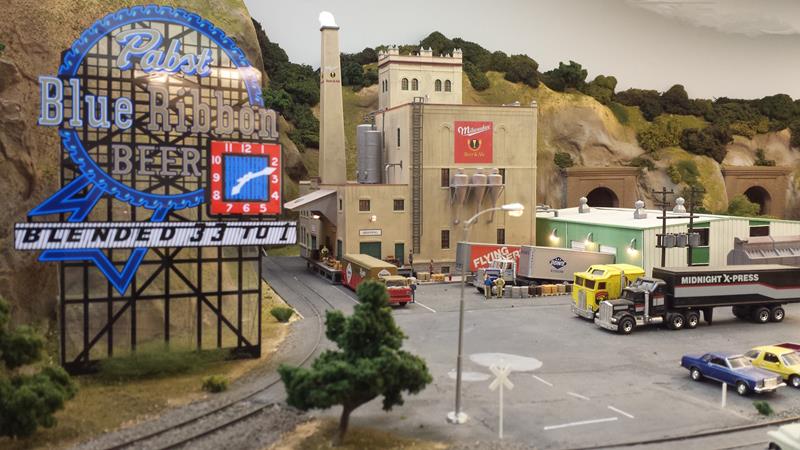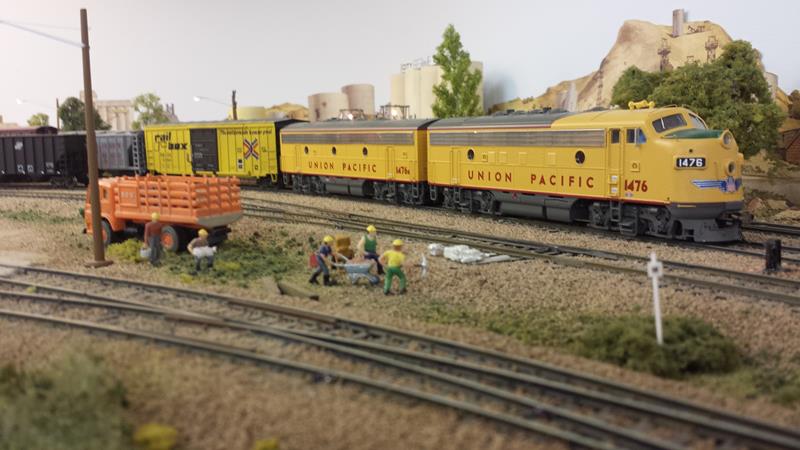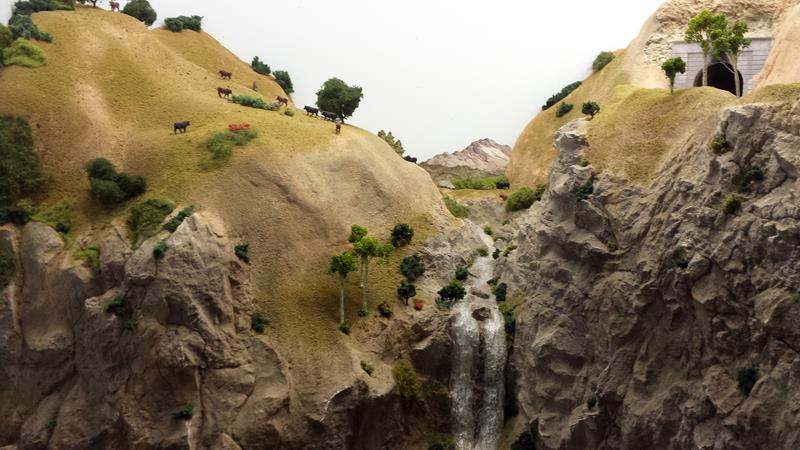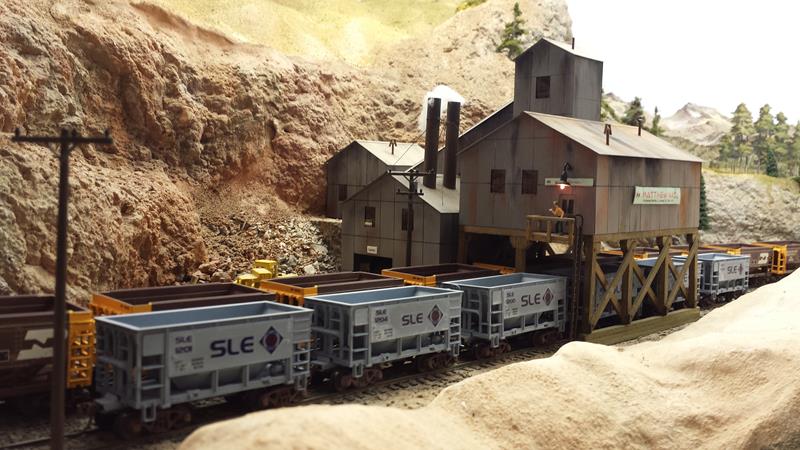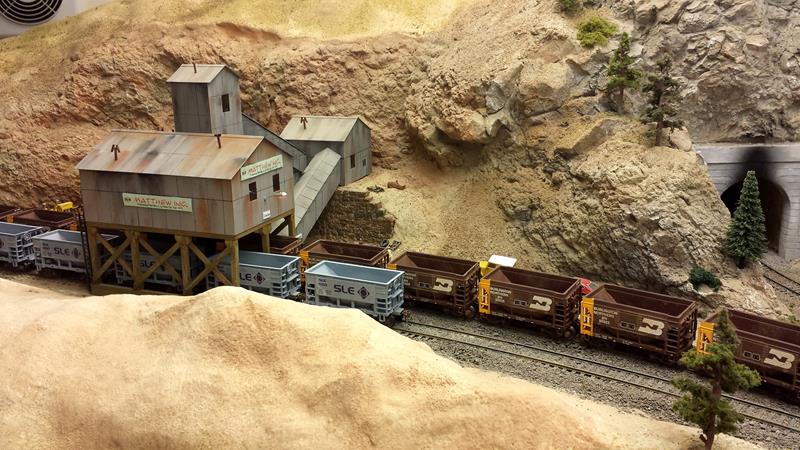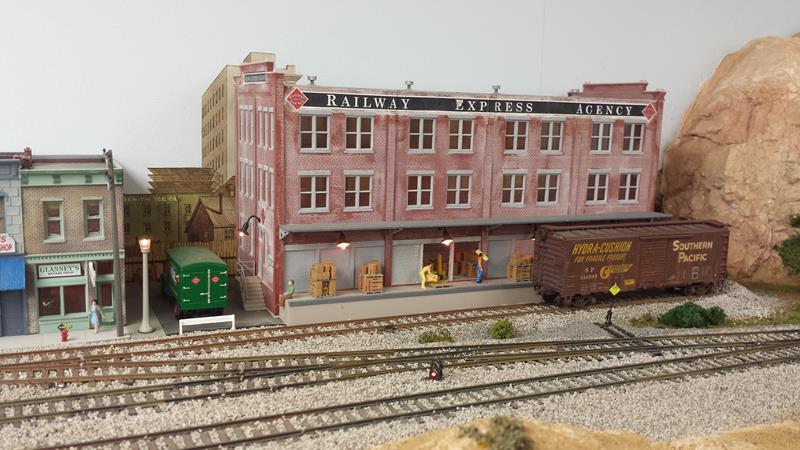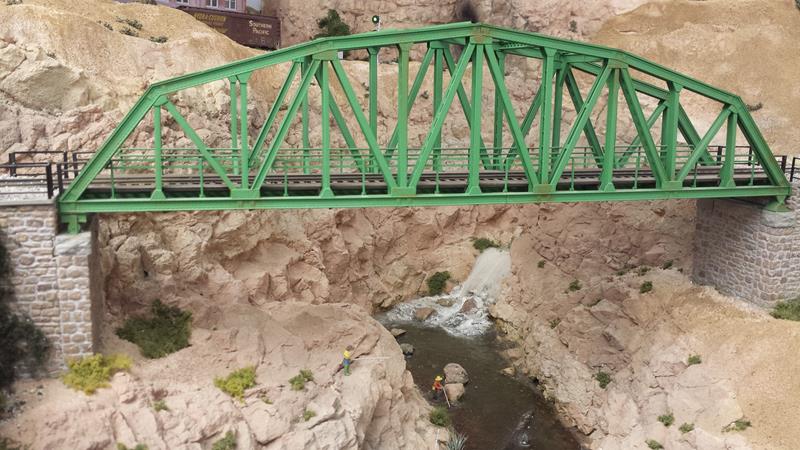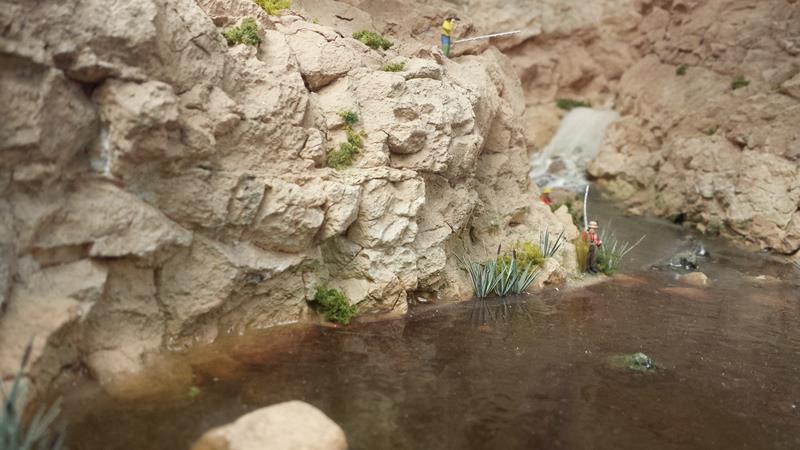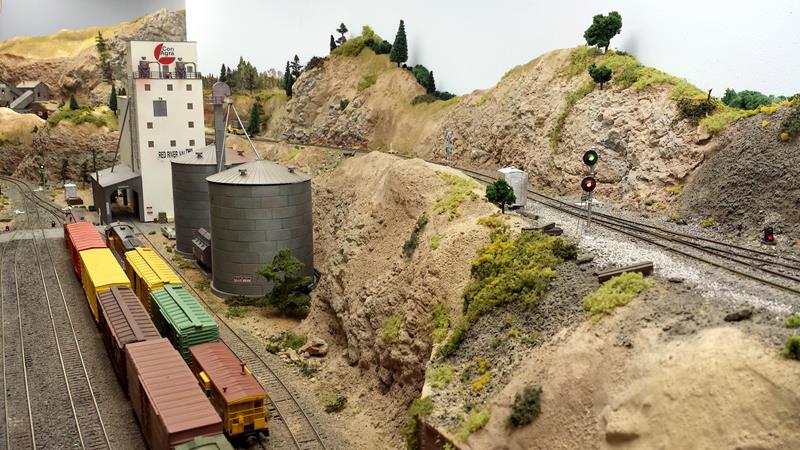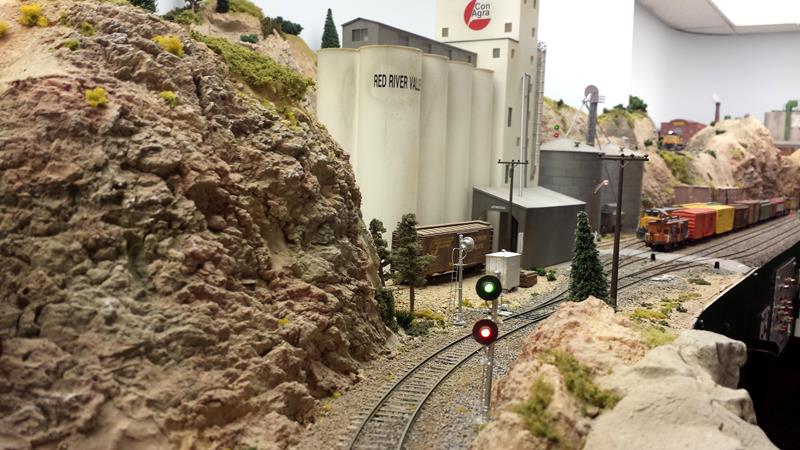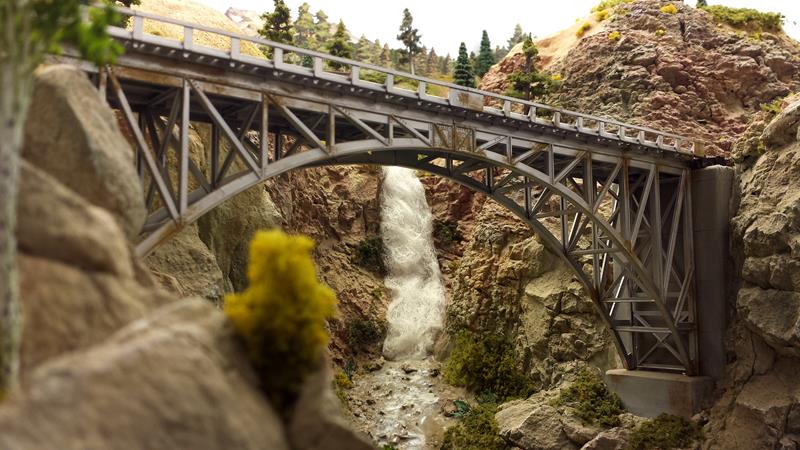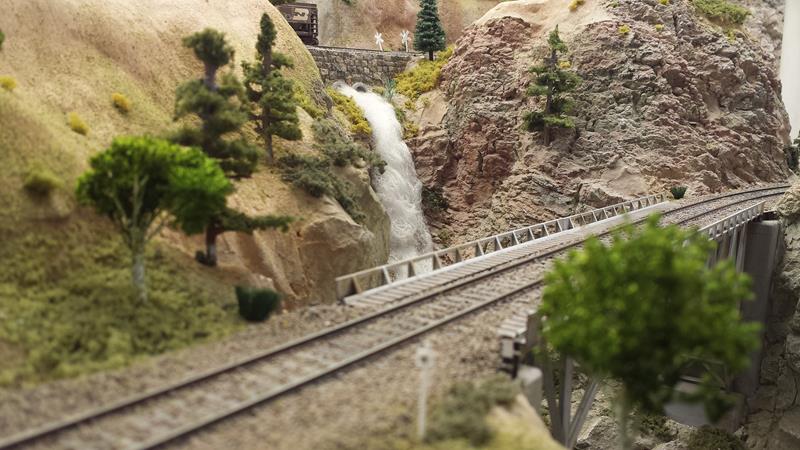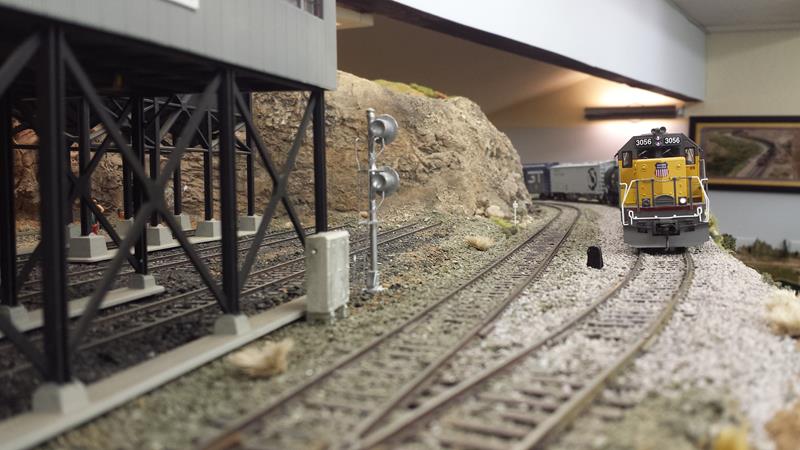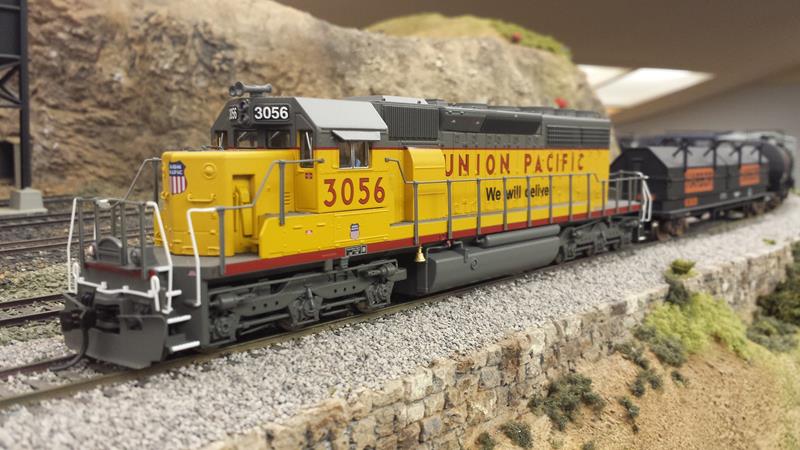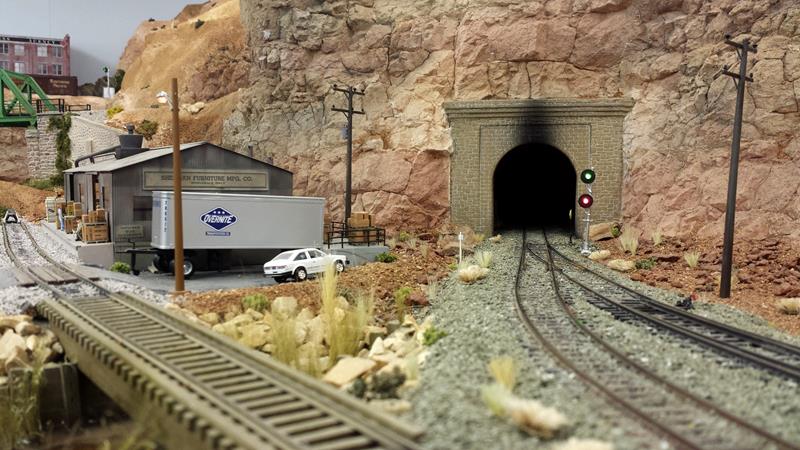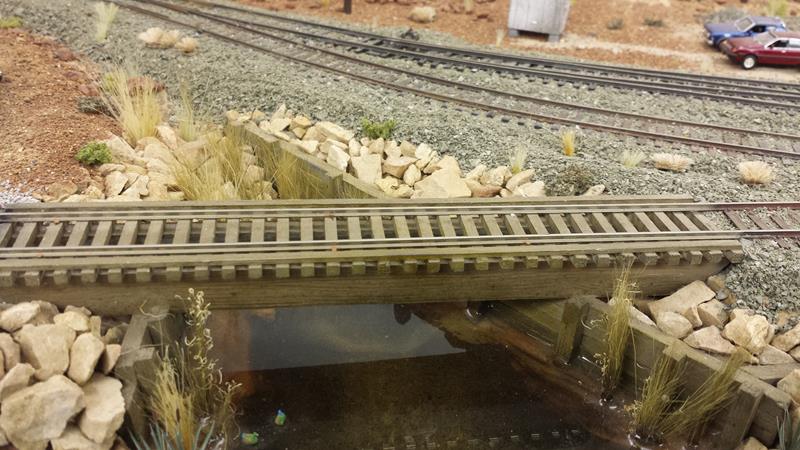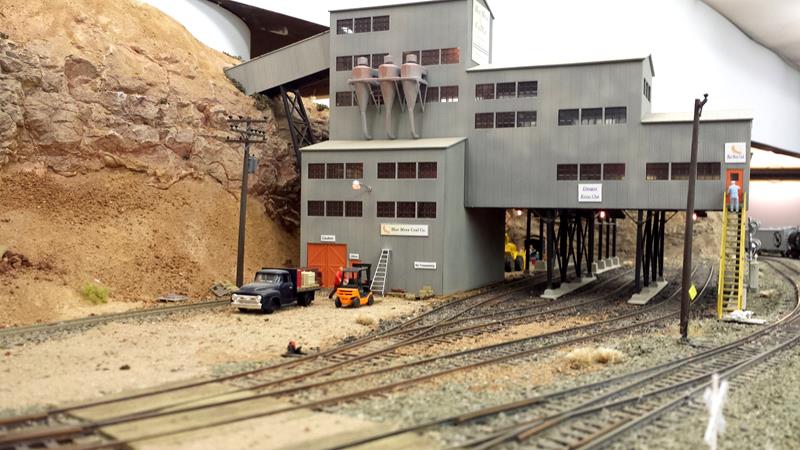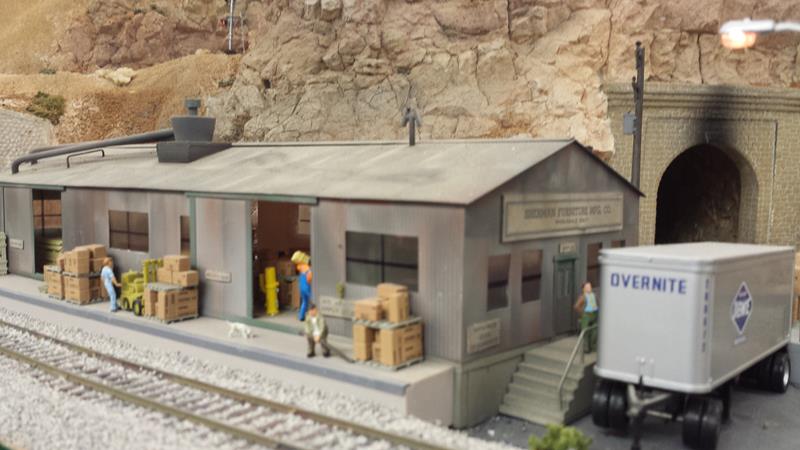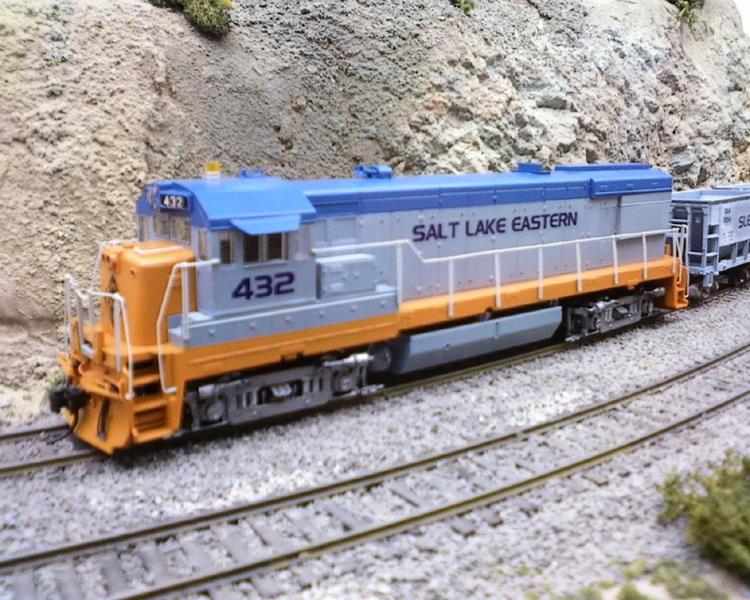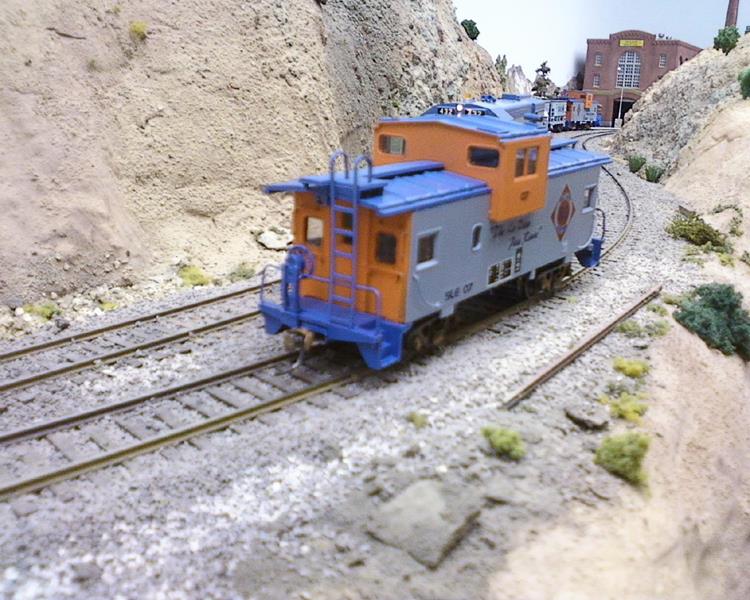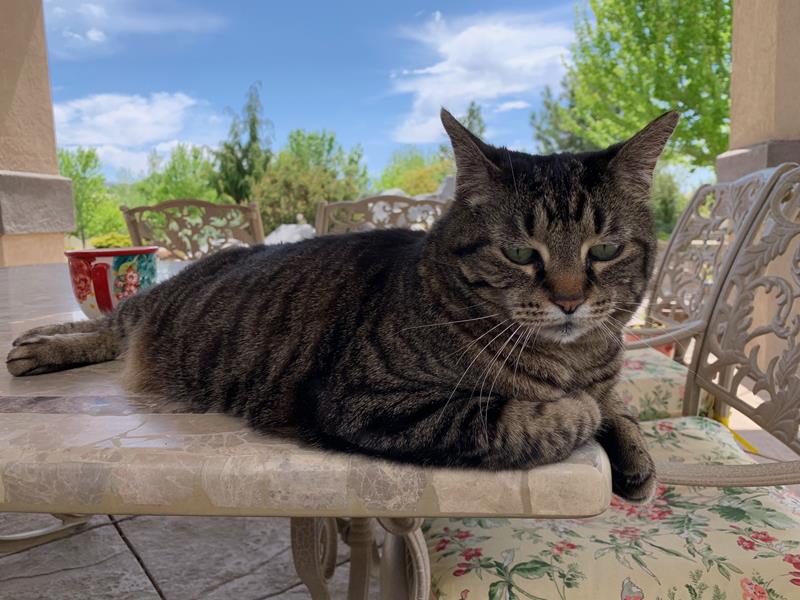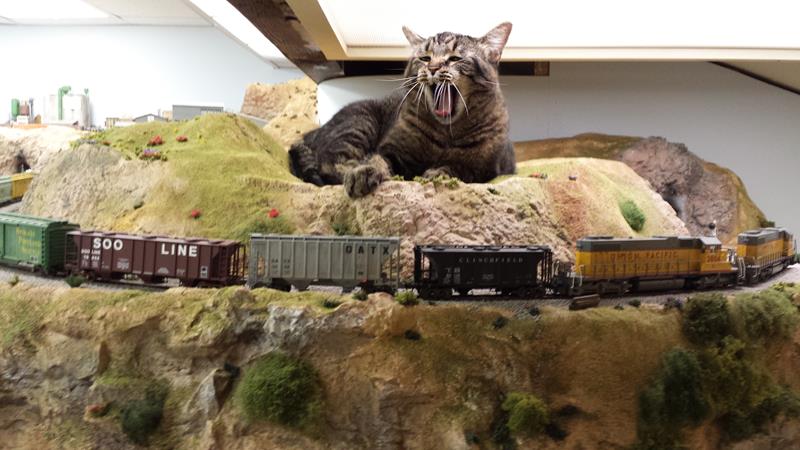

The Salt Lake and Eastern Railroad - HO Scale
I started this layout around 1988 and finally completed it about 2005. The final push was the birth of my first grandson. The layout was built in a room above my garage. It was 15' x 24' in size and was a two tiered layout with the upper level about two feet higher than the lower level. However the difference between the highest point of track from the lower level was 66". There were two helixs 36" in diameter, each with five circles of track that moved the trains from the lower level to the upper level.
The time period was roughly the mid 1970s to 1980s and the geography was the lower half of Utah,northern Colorado and Wyoming. The SL&E was a subsidary of the Union Pacific and had it's own color scheme as well as using UP's more modern diesel fleet and rolling stock.
There were 66 switches or turnouts on the layout and the mainline line ran about a scale mile and took about 5 minutes for a train to complete the circular layout. It had plenty of electronics, controlled by DCC or digital command control with each engine having a PCB mounted internally that controlled all movements of the engine and up to 26 different sounds and lights. Sounds included horn, brakes squeeling, engine idle and rev up, compressor and air fans running, warning bell, coupler clank, radio talk between the engineer and dispatcher along with directional lightning, Communications was between the hand held control through the main command control "computer" which sent signals through the rail or tracks and picked up by the onboard PCB.
The track was divided into 65 blocks or sections of track isolated from each other. Each section of track was wired through a PCB (printed circuit board) called Block Control. This was needed to run the "searchlight" signals that were associated with each block of track. Through the use of the Block Control and more PCBs called Signal Block Control and software from my laptop, each section of track was monitored for current draw. There would be a signal facing each direction at the beginning and end of each block. If current was detected, the software would set the associated block signal light to the appropriate condition based on where that section of track was occupied, in this case that section would cause a red signal to be seen on the preceeding or trailing blocks and associated signals. An approaching engine would stop based on the red light seen from the block that engine was occupying but knowing there was a train in the immediate block to its front. If there was an engine in the block after the signal light would show yellow meaning the next block is ok to enter, but the following block is occupied. If the next block was vacant, the signal would show green, ok to proceed. Signal lights could also be affected if the block in front had a switch and the switch was closed against traffic meaning the train could derail and the signal would be set to red; if the switch was closed with the traffic it meant the train would enter a siding and the light would be set to yellow.
Each switch on the layout was wired to a switch controller that activated it. There were four control panels that emulated that section of railroad. Each switch had a led lamp of red or green that would be lit depending on the conditon of the switch being open or closed. In the closed position the train would be diverted to the siding or in the case of the train moving in the opposite direction would create a derail if the train attempt to pass through. The panel led would be red for closed.
I had about a dozen plus engines and one hundred railroad cars of various usage, flat, tank, boxcar, gondolas, ore cars etc. Each car intended to serve the various customers on the railroad serving their needs to receive need resources to run the business or to ship whatever they made to other customers in need that product.
Sarge
I started this layout around 1988 and finally completed it about 2005. The final push was the birth of my first grandson. The layout was built in a room above my garage. It was 15' x 24' in size and was a two tiered layout with the upper level about two feet higher than the lower level. However the difference between the highest point of track from the lower level was 66". There were two helixs 36" in diameter, each with five circles of track that moved the trains from the lower level to the upper level.
The time period was roughly the mid 1970s to 1980s and the geography was the lower half of Utah,northern Colorado and Wyoming. The SL&E was a subsidary of the Union Pacific and had it's own color scheme as well as using UP's more modern diesel fleet and rolling stock.
There were 66 switches or turnouts on the layout and the mainline line ran about a scale mile and took about 5 minutes for a train to complete the circular layout. It had plenty of electronics, controlled by DCC or digital command control with each engine having a PCB mounted internally that controlled all movements of the engine and up to 26 different sounds and lights. Sounds included horn, brakes squeeling, engine idle and rev up, compressor and air fans running, warning bell, coupler clank, radio talk between the engineer and dispatcher along with directional lightning, Communications was between the hand held control through the main command control "computer" which sent signals through the rail or tracks and picked up by the onboard PCB.
The track was divided into 65 blocks or sections of track isolated from each other. Each section of track was wired through a PCB (printed circuit board) called Block Control. This was needed to run the "searchlight" signals that were associated with each block of track. Through the use of the Block Control and more PCBs called Signal Block Control and software from my laptop, each section of track was monitored for current draw. There would be a signal facing each direction at the beginning and end of each block. If current was detected, the software would set the associated block signal light to the appropriate condition based on where that section of track was occupied, in this case that section would cause a red signal to be seen on the preceeding or trailing blocks and associated signals. An approaching engine would stop based on the red light seen from the block that engine was occupying but knowing there was a train in the immediate block to its front. If there was an engine in the block after the signal light would show yellow meaning the next block is ok to enter, but the following block is occupied. If the next block was vacant, the signal would show green, ok to proceed. Signal lights could also be affected if the block in front had a switch and the switch was closed against traffic meaning the train could derail and the signal would be set to red; if the switch was closed with the traffic it meant the train would enter a siding and the light would be set to yellow.
Each switch on the layout was wired to a switch controller that activated it. There were four control panels that emulated that section of railroad. Each switch had a led lamp of red or green that would be lit depending on the conditon of the switch being open or closed. In the closed position the train would be diverted to the siding or in the case of the train moving in the opposite direction would create a derail if the train attempt to pass through. The panel led would be red for closed.
I had about a dozen plus engines and one hundred railroad cars of various usage, flat, tank, boxcar, gondolas, ore cars etc. Each car intended to serve the various customers on the railroad serving their needs to receive need resources to run the business or to ship whatever they made to other customers in need that product.
Sarge
Electronics of Layout
Main Layout Photos
Night photos of layout
SL&E Rolling Stock
Video of Train Movement
I never expected to lose my house to a forest fire otherwise I would have done better job with the video. This was a "spur of the moment" job. Sorry for the poor quality. Click on [X] right hand corner to enlarge picture.
I never expected to lose my house to a forest fire otherwise I would have done better job with the video. This was a "spur of the moment" job. Sorry for the poor quality. Click on [X] right hand corner to enlarge picture.

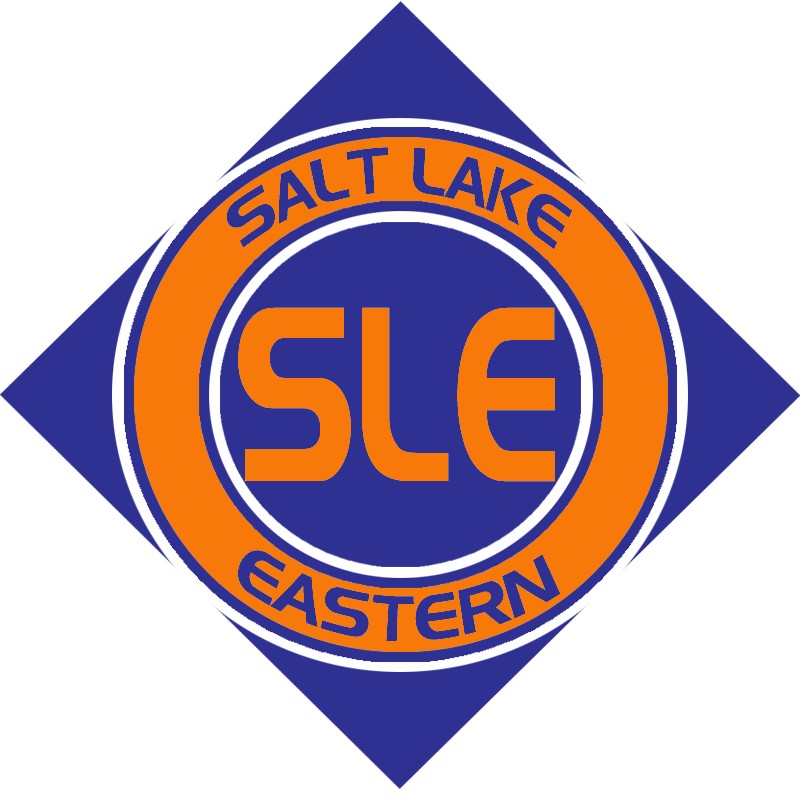
Emma, my Cat
